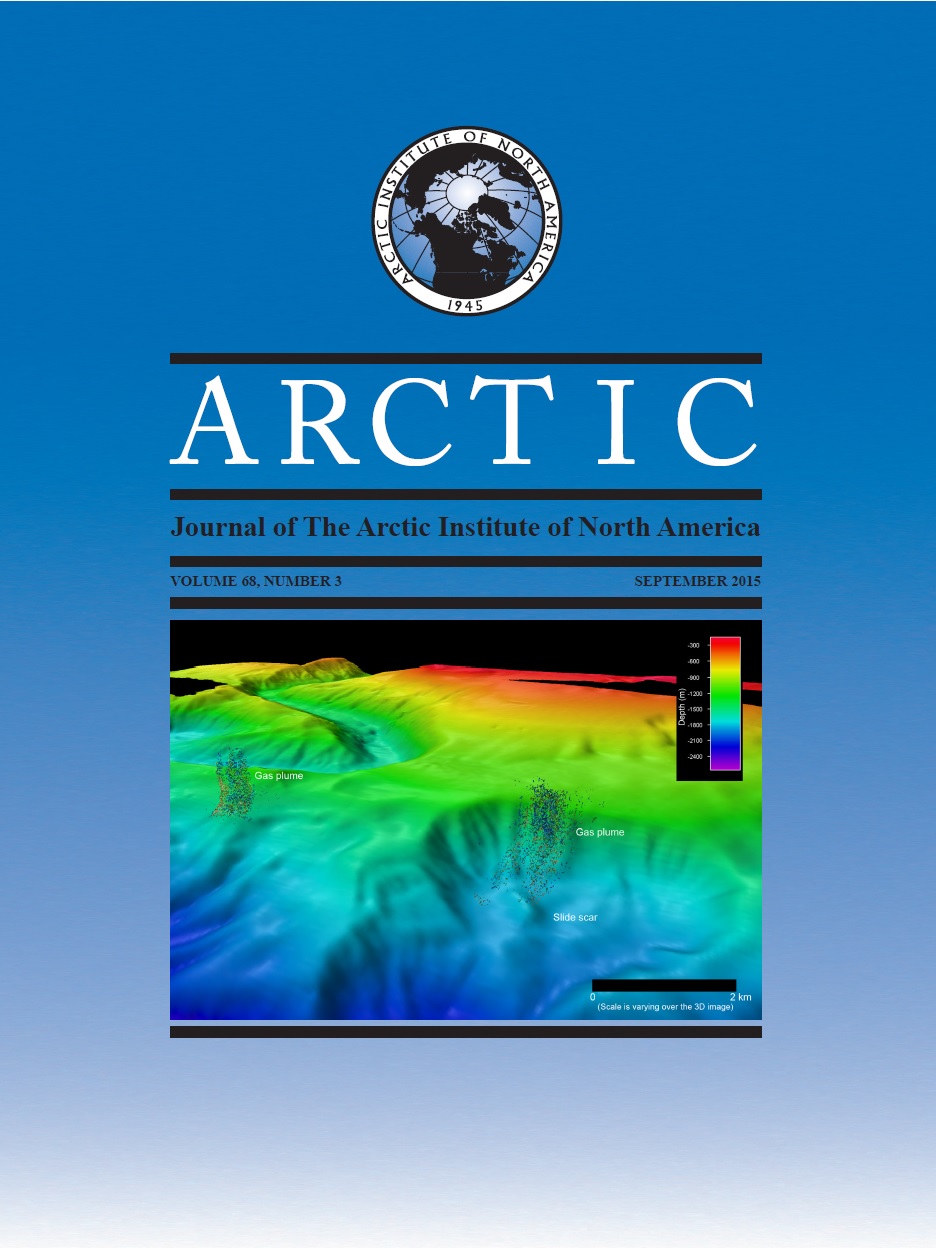The Contributions of Community-Based Monitoring and Traditional Knowledge to Arctic Observing Networks: Reflections on the State of the Field
DOI :
https://doi.org/10.14430/arctic4447Mots-clés :
surveillance communautaire, connaissances traditionnelles, réseaux d’observation, changement environnemental, durabilité, gestion du savoir, gestion des ressources naturellesRésumé
Dans l’Arctique, la surveillance communautaire (SC) reçoit un appui de plus en plus grand de la part de nombreuses parties intéressées, dont les membres de la communauté, les scientifiques, les organismes gouvernementaux et les bailleurs de fonds. Dans le cadre des initiatives de SC, des habitants de l’Arctique effectuent des tâches permanentes d’observation et de surveillance ou participent à de telles tâches. Les peuples indigènes de l’Arctique observent l’environnement depuis des millénaires. Souvent, la SC fait appel aux connaissances traditionnelles, connaissances qui peuvent être employées seules ou conjointement avec les méthodes classiques de surveillance scientifique. Nous nous sommes appuyés sur les connaissances dérivées du premier sommet d’observation de l’Arctique pour donner un aperçu de l’état de la SC dans l’Arctique. La méthode de SC est centrée sur les besoins et les intérêts de la communauté. Elle permet d’obtenir des données à grain fin à l’échelle locale, données qui sont facilement accessibles par la communauté et les preneurs de décisions municipaux. Malgré ces avantages, il existe peu de documentation au sujet des initiatives de SC et souvent, ces initiatives ne sont pas rattachées aux grands réseaux, ce qui fait que bien des intervenants ne comprennent pas clairement ce qui se passe sur le terrain et ne savent pas vraiment comment appuyer la croissance et le développement de la surveillance communautaire. Les initiatives de SC respectent les cadres de référence nécessaires en matière de droit et de gouvernance, et ceux-ci varient considérablement au sein des contextes nationaux. L’enrichissement de la documentation en ce qui a trait aux différences et aux similitudes qui existent entre les communautés de l’Arctique en matière de besoins d’observation, d’intérêts et de capacités juridiques et institutionnelles aidera à déterminer en quoi la SC pourra jouer un rôle au sein des réseaux d’observation de l’Arctique. Bien que la SC ait la possibilité de jouer un rôle important dans les besoins d’observation des communautés, il y a lieu de faire plus d’investissements et d’expériences pour déterminer comment les observations et les données découlant des méthodes de SC pourront favoriser la prise de décisions au-delà des communautés.Téléchargements
Les données relatives au téléchargement ne sont pas encore disponibles.
Téléchargements
Publié-e
2015-01-13
Numéro
Rubrique
Articles


